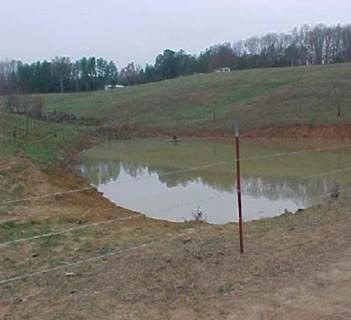Testing Stock Water
|
In spite of limited runoff from winter snow melt or spring rains, most pastures have surface water from the past several years of a wet cycle. Without dilution from additional water, mineral content and salts may have started to concentrate from evaporation and ground salt migration. Good cattle production and health is dependent on them having an adequate and safe water supply. While quantity or shortage may be obvious, using a lab to analysis will help determine if the quality is acceptable may be considered. A number of factors can be analyzed to determine if water is acceptable for cattle. One of the first analysis to determine suitability to livestock is the measure of total dissolved solids (TDS) which measures all the dissolved minerals. Mature cattle can probably tolerate TDS up to 15,000ppm for a limited time but is dangerous to continued use and is likely affecting health and production. The National Academy of Science considers up to 3,000ppm acceptable. Sulfates are one of the dissolved solids that in particular can affect livestock causing a laxative effect, electrolyte imbalance, and mineral tie-up. The acceptable limit is 0-500ppm and water intake typically low on high sulfate water. |
Watersheds supplying water to ponds that have been heavily fertilized or high in nitrogen might contribute to elevated nitrate concentrations with potential toxicity. Testing for bacterial microorganisms is common for human water sources (and on dairies). Coliform bacteria are nearly everywhere and are of less concern in surface beef water. Several commonly used feed testing labs, also perform livestock water tests as well as the ND Department of Health. Sample bottles, mailers, and submission reports can be obtained by calling the labs.


